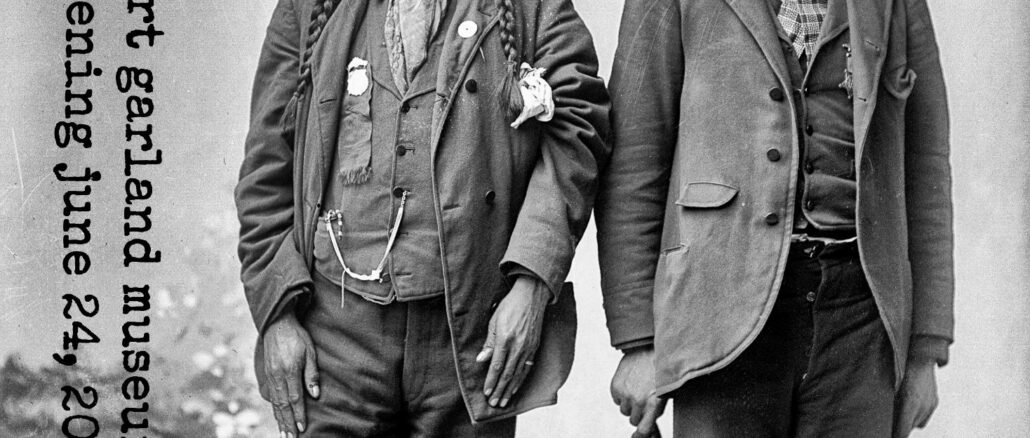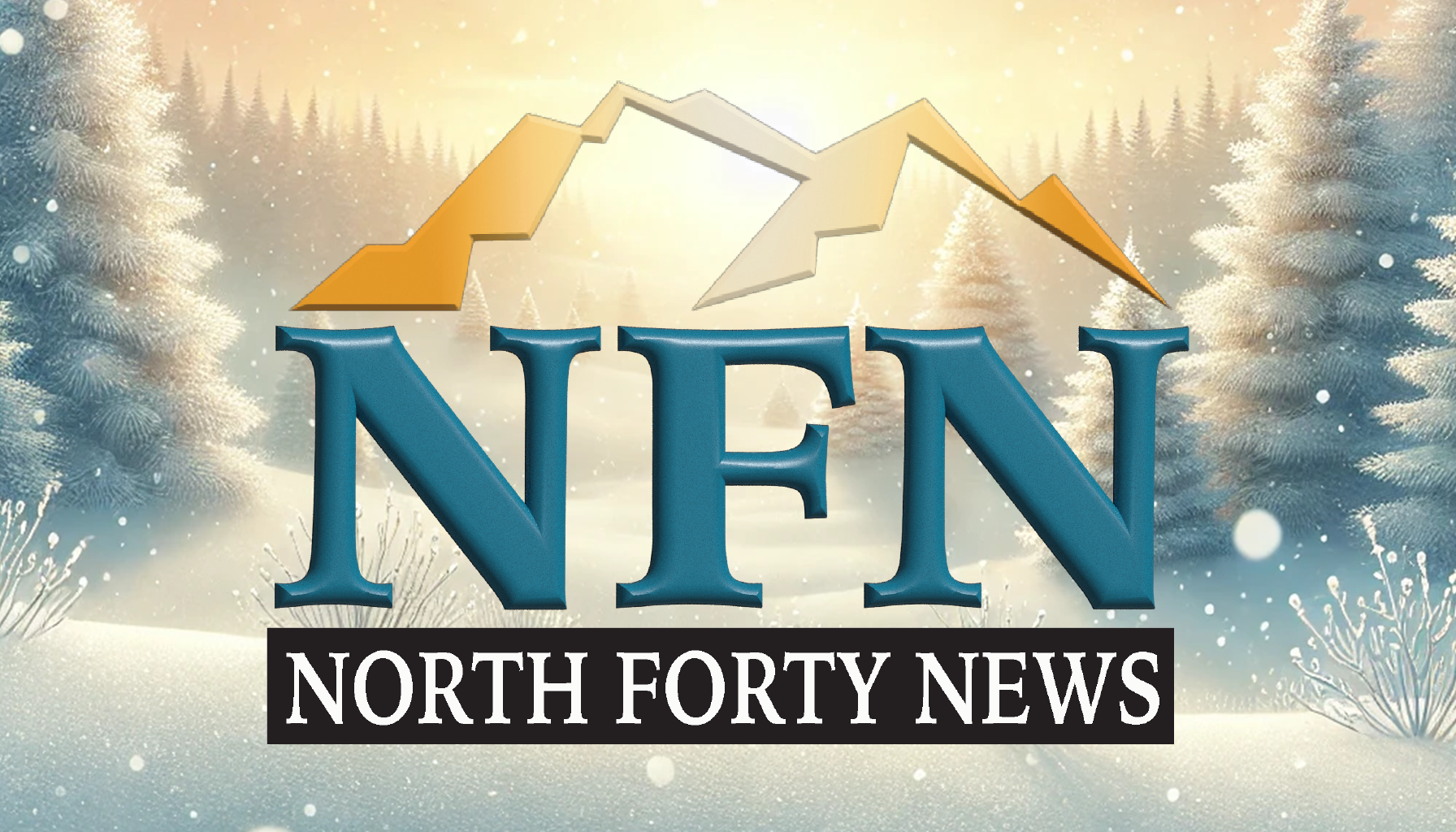
This advertising makes North Forty News possible:
History Colorado’s Fort Garland Museum & Cultural Center works diligently with eight independent artists to create a new exhibition that disrupts the common narratives of manifest destiny and settlement of the American West.
Titled buffalo soldiers: reVision, this exhibition opens on June 24, exactly 165 years after Fort Garland was commissioned by the United States, and presents a more visual interpretation of the history and impact of the all-Black Army regiments that were established in 1866 following the Civil War.
Known as Buffalo Soldiers, these regiments – including the 9th Cavalry stationed at Fort Garland from 1875 to 1879 – played a role in American westward expansion and the displacement of Indigenous populations.
Support Northern Colorado Journalism
Show your support for North Forty News by helping us produce more content. It's a kind and simple gesture that will help us continue to bring more content to you.
BONUS - Donors get a link in their receipt to sign up for our once-per-week instant text messaging alert. Get your e-copy of North Forty News the moment it is released!
Click to DonateMany of those who served as Buffalo Soldiers were formerly enslaved African Americans, and military service allowed them to make a living and provide for themselves and their families.
The 9th Cavalry and the other Buffalo Soldiers’ regiments served valiantly and honorably despite facing discrimination and segregation. Their legacy, however, is complicated, for they often stood on the front lines of conflict with Native Americans.
buffalo soldiers: reVision will also explore the prejudice and systemic racism faced by Buffalo Soldiers following emancipation, as well as the lasting impacts of this history in Southern Colorado.
“This exhibition allows us to explore the complexity of this history to understand, acknowledge, and reconcile some of the most difficult aspects of our collective history while updating and expanding our understanding of the Buffalo Soldiers,” said Eric Carpio, History Colorado’s Chief Community Museum Officer and Director of Fort Garland Museum & Cultural Center. “It’s also a chance to look forward to the future of historical interpretation of the American West with renewed perspective and wisdom so we can tell a more inclusive and representational history.”
buffalo soldiers: reVision will feature the works of a team of artists who have been partnering with Carpio to collectively understand this multifaceted history with the help of Buffalo Soldier scholars, descendants, community members, and tribal partners. This exhibition is made possible through sponsorships from Arts in Society and the National Endowment for the Humanities.
The creations from this team of artists will take multiple forms ranging from prints, which layer historical photos and documents with contemporary drawings, to poetry which evokes the emotional toil of this part of our shared history.
Included amongst the artists working on the project are: lead artist Chip Thomas, aka jetsonorama, who created the Unsilenced: Indigenous Enslavement in Southern Colorado installation currently on display at Fort Garland, and Esther Belin (Diné), award-winning poet and author of From the Belly of My Beauty.
Thomas was intrigued to pursue this project because it allowed him to explore several questions of interest to him over the 35 years he has spent working on the Navajo Nation, including: “how did formerly enslaved peoples rationalize the subjugation of another race,” and “in what ways did Buffalo Soldiers connect with the lands they were helping to take away from Indigenous peoples?”
“It seems the land provided solace and space for contemplation, maturation, and dreaming of new possibilities in a way the Black soldiers couldn’t consider in the Reconstruction South when enslavement was replaced by Black Codes,” Thomas said. “For the Buffalo Soldiers, the expansive horizons of the west are a metaphor for unlimited possibilities to discover oneself as they continue to do to this day.”
Belin expressed that this project has been challenging as it required her to grapple with the difficult history of how her Indigenous ancestors were captured, slaughtered, and decimated by the United States government, including the very Buffalo Soldiers whose histories reVision will be telling. Creating art in response to this complicated history entailed empathetic journeys into the choices of the Buffalo Soldiers.
“I wondered if those men ached at witnessing Indian people die and be slaughtered to protect their land,” Belin said. “I wondered at the idea of property and how the soldiers queried that concept, possibly overhearing conversations that Indians did not feel they owned the land but rather the land was for them to use and be stewards of.”
Thomas’ contribution to reVision highlights Native and Black interactions by emphasizing established friendships and alliances in the two communities that challenge the stereotypical narratives. Belin will write historical narratives in poetic form, unpacking themes of race, land, and the harm unleashed by westward expansion while providing an emotional testament to the difficult choices Buffalo Soldiers faced.
Another crucial part of this exhibition is the building in which it will be displayed. At the base of the eastern boundary mountain for the Diné nation, the location of Fort Garland represents troubled history. This revisioning initiative offers a pledge to present the region’s complex history.
“The West Officers Quarters is one the of the five remaining buildings that was constructed in 1858 when the former US Army fort was established,” Carpio said. “The whitewashed adobe walls and wooden vigas that have been here since the 9th Cavalry was stationed here in the late 1870s add a powerful element of ‘place’ to the exhibition.”
buffalo soldiers: reVision is part of a larger project to reimagine the Fort Garland History Museum & Cultural Center so that it better represents the diversity of the San Luis Valley. This reimagining is funded through a grant by the National Endowment for the Humanities, which allows History Colorado to explore the complex and difficult histories of westward expansion and colonization.
This work is necessary as the older exhibitions at the museum largely erased or misrepresented the experiences of marginalized communities, including Indigenous people, Chicanos/Hispanos, and women and children who lived with or visited soldiers stationed at the Fort.
In the build-up to the opening of buffalo soldiers: reVision, Fort Garland Museum & Cultural Center will be hosting events exploring the history of Buffalo Soldiers and the impact of westward expansion. The first of these events is a zoom presentation by Louis Gregory McAllister, professor of Ethnic Studies at Northern Arizona University, on John Taylor & Black Identity in the Ute Borderlands on April 5, from 6-7 pm. This event is free and open to the public, but registration is required.
About the Fort Garland Museum and Cultural Center
Fort Garland was built in 1858, ten years after the Treaty of Guadalupe Hidalgo, during American expansion into the west. Today, visitors can explore life in a nineteenth-century military fort by walking the parade grounds and touring five of the original adobe buildings. The Fort Garland Museum and Cultural Center is a museum of History in Colorado.
The Fort Garland Museum and Cultural Center is located at 29477 Hwy. 159, Fort Garland, Colorado, is open daily from 9 am to 5 pm. Visit www.FortGarlandMuseum.org or call 719-379-3512 for more information.
